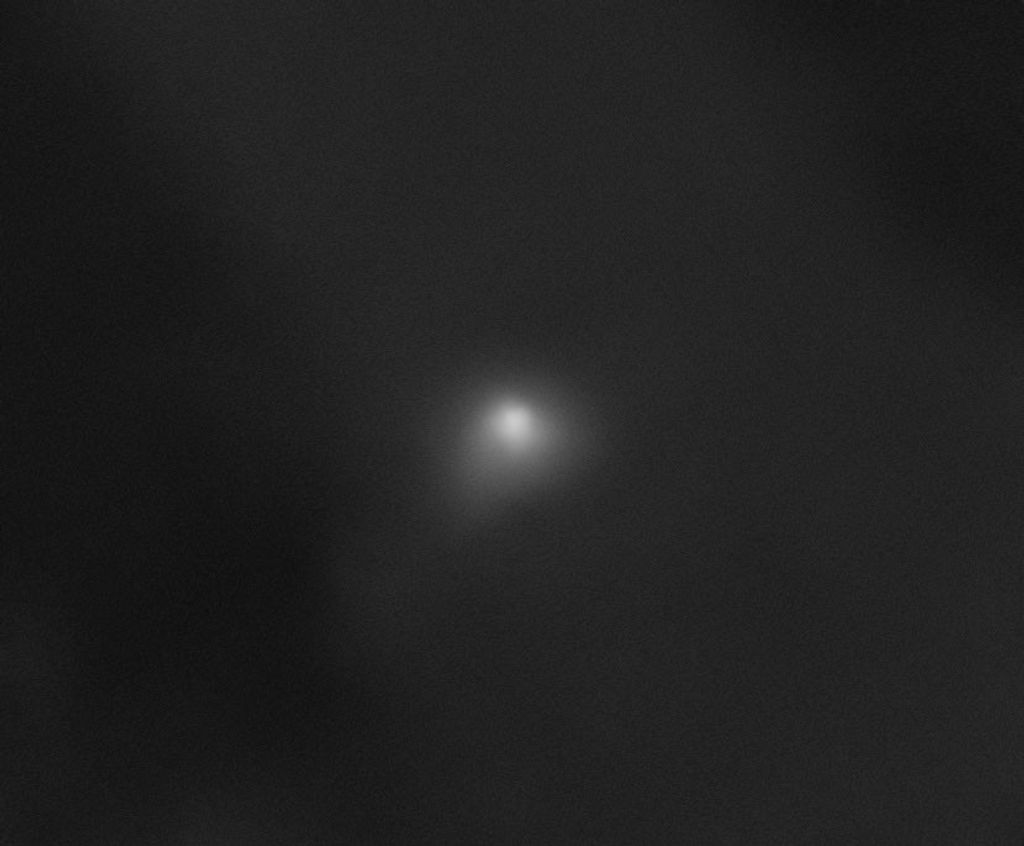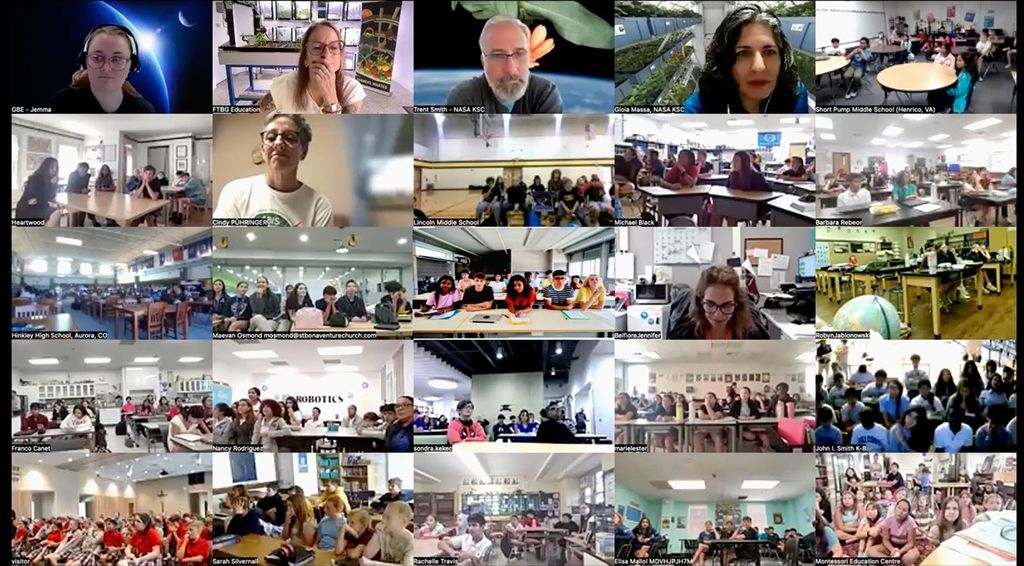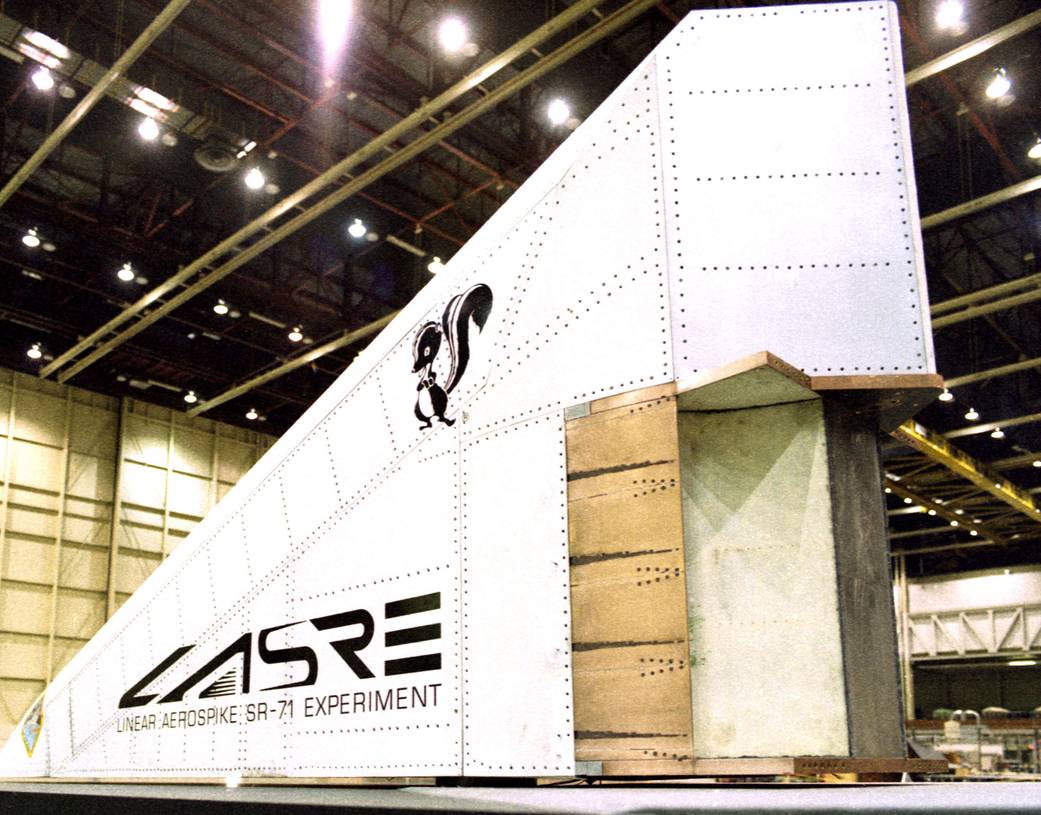EC96-43419-36
This rear view of the Linear Aerospike SR Experiment (LASRE) pod shows the business end of the linear aerospike rocket engine prior to the experiment’s fit-check on Feb. 15, 1996, at Lockheed Martin Skunkworks in Palmdale, CA.
One of the differences between linear aerospike and traditional rocket engines was that the linear aerospike used the airflow around the engine to form the outer “nozzle.” There was no bell-shaped nozzle as is commonly seen on most rocket engines. The engine was made of a high-strength copper alloy called NARloy-Z. The white curved ramps next to the copper area pictured acted as the inner half of the engine’s “nozzle.” There were four thrusters (copper area) on each side of the engine for a total of eight which combined the fuel, oxidizer, and ignition source for the engine.15 Feb 1996NASA Photo / Tony Landis› SR-71-LASRE Project Description
1 min read





























